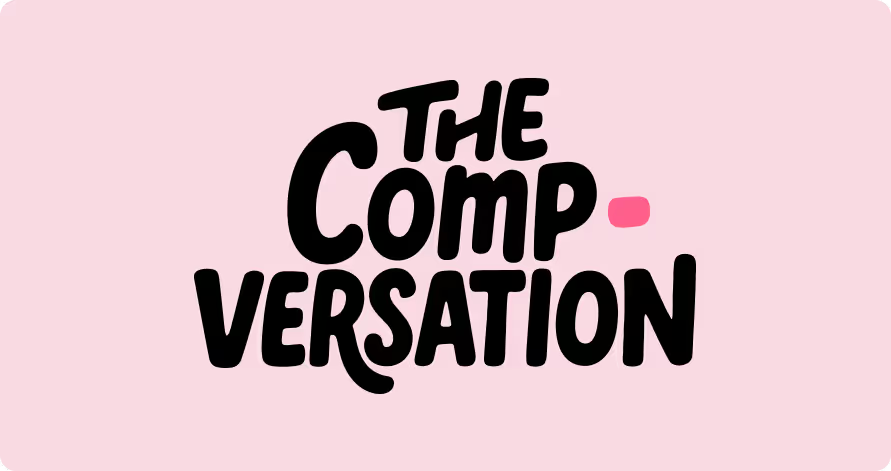Compensation as an employer branding tool?
At first glance, compensation & benefits might seem like a simple equation: how to get the best candidate possible, for the lowest possible price.
The best talent would choose the best offers — and everyone else would have to settle for what’s left.
Thankfully, this isn’t the reality on the ground. As compensation & benefits professionals, our work isn’t just about the financial side of things. For many of us, this purely numbers-based approach is nothing more than a caricature.
Because there’s something else at play every time we make a decision about compensation. Something we could call the ‘spirit’ of the organisation. Or, to put it another way, it’s culture.
Aligning compensation with culture
How is your business showcasing its culture?
If it’s anything like most organisations, I could get a good idea of it by heading to the ‘About Us’ page on your website. This page would likely tell me how your values as an organisation are reflected in your ways of working, collaborating, innovating and recruiting.
But one thing I probably won’t learn about? Your approach to compensation.
This is hardly surprising: there has long been a taboo around pay. Historically, compensation has not been something we discuss openly — and certainly not something you’d publish in black and white, right there on your website.
These days, that taboo is slowly lifting. And in this new world, compensation and culture are going to be more and more entwined.
That’s because, in the era of pay transparency, pay decisions can no longer be left to chance.
Your culture can serve as a compass — guiding your decisions and helping you justify them afterwards.
That means there needs to be a strong alignment between your company culture and your compensation policy.
Let’s take the example of Netflix, a company with a strong performance culture.
This is a company that pays at the top end of the market, but also expects a lot from its employees. The company even offers resignation bonuses, reasoning that employees who would prefer to leave should be encouraged to do so since it means they’re not properly committed to the company.
Other companies with strong cultures and identities emphasise collective achievements and value-sharing — the French company Leroy Merlin is a good example.
The fact is, the way businesses pay their employees is a fundamental part of who they are. That’s why a purely financial approach to compensation will never work.
The next ‘CSR’?
Businesses will soon be obligated to clearly explain their compensation policies.
They’ll have to justify decisions about pay and present them as favourably as possible to employees and job candidates.
But what starts as an obligation — either legal or imposed by the evolution of the market — can soon become a selling point. For example? Corporate social responsibility, or CSR.
Today, CSR isn’t just a simple question of compliance. It’s also a major challenge for employers.
Top businesses don’t just meet their legal obligations: they use their convictions and commitments to highlight who they are.
So I wonder: are we going to see a similar movement around compensation?
Yes, businesses will soon be obligated to share certain figures: a salary range for each open role, and statistics on their gender pay gap, for example. But they’ll also need to use the right storytelling to put those figures into context.
The ‘star performers’ in compensation are already working on how they communicate publicly around pay. They know compensation will soon form an important part of their employer brands.
Getting the compensation story right
Finding the right way to talk about your compensation policy isn’t easy.
It’s only a nascent discipline, after all — and it’s likely that in the months and years to come, we’ll see companies doing it more and less effectively.
There’s a subtle balance to be found between highlighting the values behind every pay decision, and the concrete ways they’re put into action. Things like average increase budgets, and the criteria used to decide who gets a pay rise (and who doesn’t).
Little by little, businesses will have to get better at this — especially those who pay at or below the market median. These companies won’t be able to rely on pay levels alone to stand out from the competition, so they’ll need to highlight the values that make up their compensation policies.
A newsletter by Anita Lettink provides some examples of the ways in which big companies, including Unilever, Barclays, ASDA and GSK, choose to talk about their gender pay gaps.
Yes, gender pay gap reporting has been a legal obligation in the UK since 2018. But, as Anita demonstrates, these companies all have different ways of presenting their figures.
There’s an important pitfall to be aware of here: businesses that don’t go beyond the strict minimum requirements won’t be able to pass off their compliance with the law as an employer branding asset.
If they do, they risk being unmasked by candidates and employees, who are more and more discerning about this type of thing.
It’s a bit like companies in France that boast in job ads about the fact they reimburse 50% of the cost of their employees’ public transport passes… even though this is a legal obligation.
This sort of attempt to pull the wool over candidates’ eyes won’t work much longer.
And that’s especially true when it comes to younger generations: according to an EY report, 92% of Gen-Z respondents find authenticity to be a crucial value. By 2030, this generation will represent 58% of the global workforce.
The conclusion to draw here is clear: tomorrow’s storytelling will need to be sincere… which means employers will need to be prepared to clearly explain their compensation policies.
To continue the conversation
Here’s a selection of content to give you food for thought on this topic. If you’ve come across any interesting reads, feel free to share them!
Resisting Pay Transparency Isn’t Just Futile—It’s Foolish — Robert Sheen, Forbes
This column in Forbes makes a familiar argument: corporate pay transparency is now inevitable. But this article from Robert Sheen isn’t just a repetition of what we’ve already heard! It neatly summarises the latest developments and provides concrete recommendations for companies that want to completely overhaul their salary policies… before they're ready to communicate about them.
14% of companies say workers have quit after seeing jobs with higher pay following transparency laws — Jennifer Liu, CNBC
The worst-case scenario is already coming to pass for the companies that are the most resistant to pay transparency. According to a Payscale study cited by CNBC, the ‘poor players’ of transparency are already struggling to retain top employees, who are more informed and demanding than ever before.



.avif)

